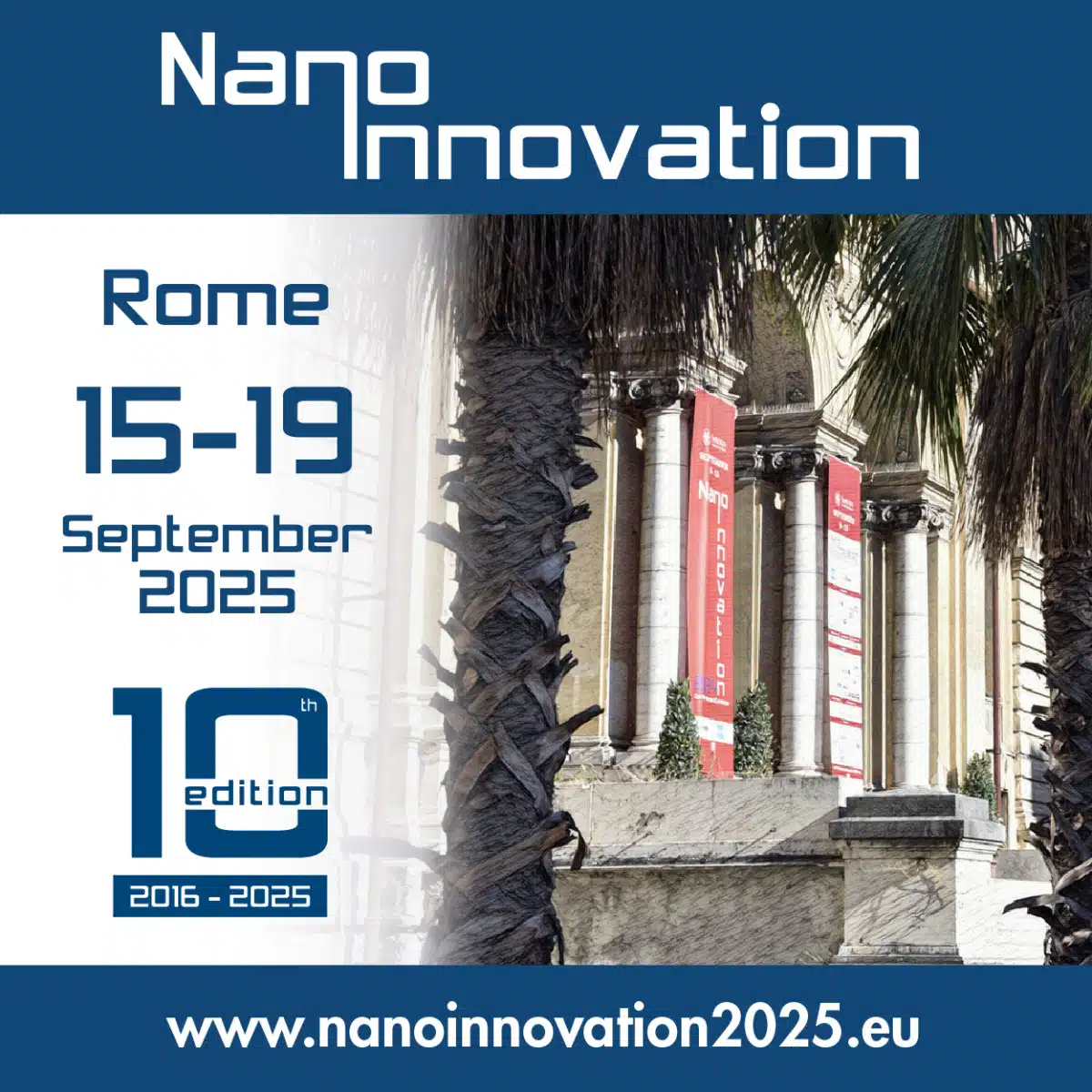From September 15 to 19, Rome hosted the NanoInnovation Conference 2025 at the Faculty of Civil and Industrial Engineering of Sapienza University of Rome, Italy.

Over the past decade, the NanoInnovation Conference has established itself as a flagship event for the national community focused on advancing nanotechnology and integrating it with other key enabling technologies (KETs) across all application fields. With over 1,300 participants in recent editions, the conference has become a central platform for knowledge exchange, collaboration, and innovation.
Nanotechnology has emerged as one of the most significant and influential drivers of rapid, sustainable development, with a profound impact across numerous sectors. This conference serves as a well-established springboard for the national and international communities engaged in nanotechnology and its related applications.
COST Actions involved in nanotechnologies
This year’s programme emphasised innovation, nanomedicine, nanomaterials, energy, and their interconnected ecosystems, aiming to maximise the technological and societal impact of investments in research and higher education.
On 15 September, COST hosted a session highlighting how nanotechnologies can drive progress across various scientific fields. Presented through the lens of eight COST Actions, the discussion demonstrated how these networks strengthen collaboration and deliver clear benefits to their members. Topics covered included data-driven applications, advanced materials, artificial intelligence and machine learning, AgriNano techniques for sustainable agriculture, luminescent sensors for environmental security, advanced energy materials enabling the clean energy transition, the emerging potential of thin-film photovoltaics, epitaxy, and the development of next-generation devices.
Relevance for COST Actions
Dr Francesco Mercuri, Consiglio Nazionale delle Ricerche, Italy, EuMINe Action Chair:
“Engaging at NanoInnovation 2025 is particularly valuable for EuMINe because our Action is focused on applying AI, data sciences, and digital technologies to advanced materials, with a clear orientation toward sustainable industrial applications. As a highly multidisciplinary network, EuMINe connects expertise in digitalisation, materials innovation, and industrial deployment, making it possible to exchange knowledge with leading researchers and stakeholders, consolidate and expand our network, and identify new opportunities for data-driven, sustainable, and circular solutions in advanced materials. Conferences like this are essential to translate research and innovation into the real world, reinforcing both the scientific and societal impact of our Action.
He adds: “Participation in this conference offers EuMINe the opportunity to identify platforms and pathways for applying AI and data-driven approaches in real-world industrial and research applications. One of the main limitations of these approaches is the limited connection between digital technology experts and end-users across academia and industry. By engaging in this conference, EuMINe can expand its network, reaching both experts in horizontal technologies and stakeholders in diverse vertical applications, fostering interdisciplinary collaborations and increasing the impact of data-driven innovation across multiple fields of technology and research.”
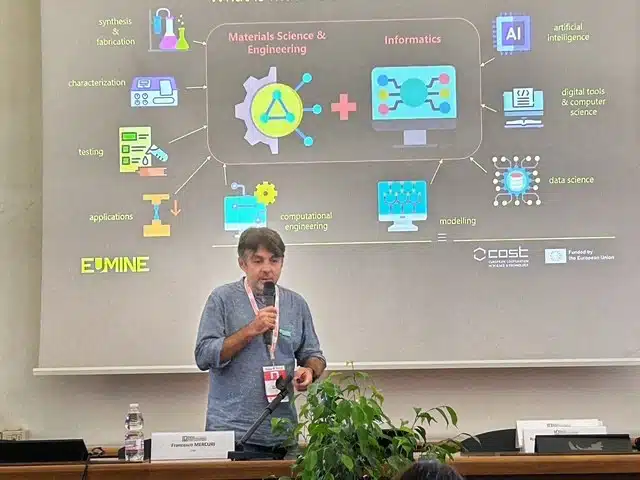
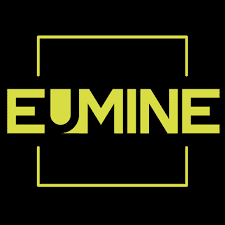
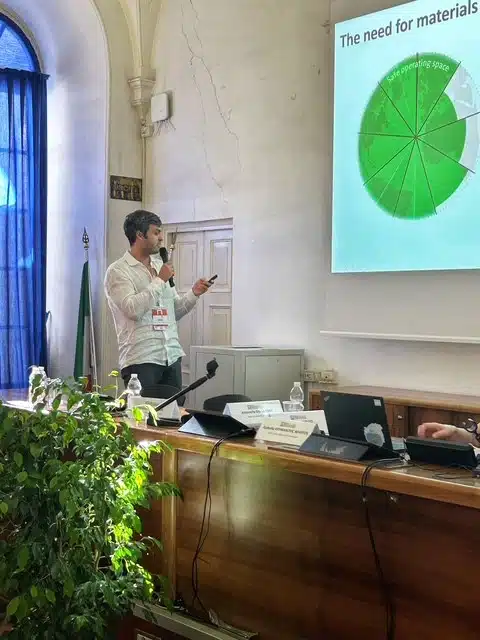

Dr Francesco Macheda, Universitá of Modena and Reggio Emilia, Italy, Working Group member from DAEMON COST Action:
“Engaging at the Nano Innovation Conference is incredibly valuable for COST Action as it directly connects our research network with a broader ecosystem. This interaction is vital for developing advanced materials, as it grounds our Machine Learning work in real-world data and practical challenges. Further, the role of these collaborations is central in the COST Action mission, as they are key to translating ML models from theory into practical tools for innovative functional materials design.”
Prof. Antonella Dalla Cort, from Università degli studi di Roma La Sapienza, Italy, and LUCES Training School Coordinator:
“Engaging with researchers and stakeholders at the Nano Innovation Conference is highly valuable for many reasons related to the development of luminescent sensors and environmental security. Researchers bring their expertise that can accelerate the development of more sensitive, selective, and durable luminescent sensors. Stakeholders can provide practical perspectives on real challenges. Interactions favour interdisciplinary collaborations, enabling the integration of nanotechnology with science. In the field of nanotechnology, the role of researchers and stakeholders is expanding due to their collaboration that enhances the pace of innovation, ensures relevance and applicability, and promotes responsible use of nanotechnologies for environmental security.”
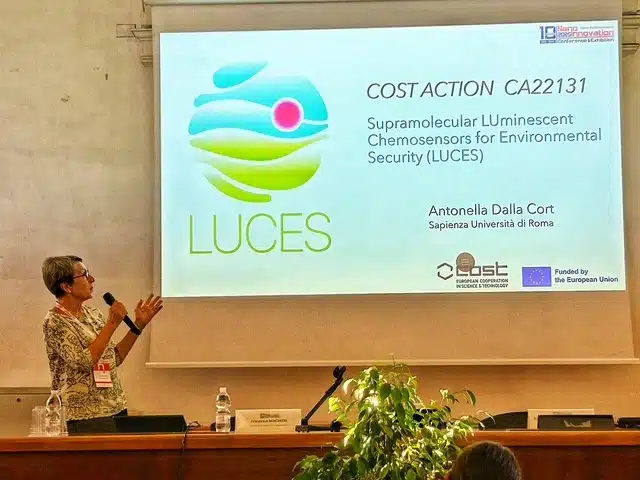

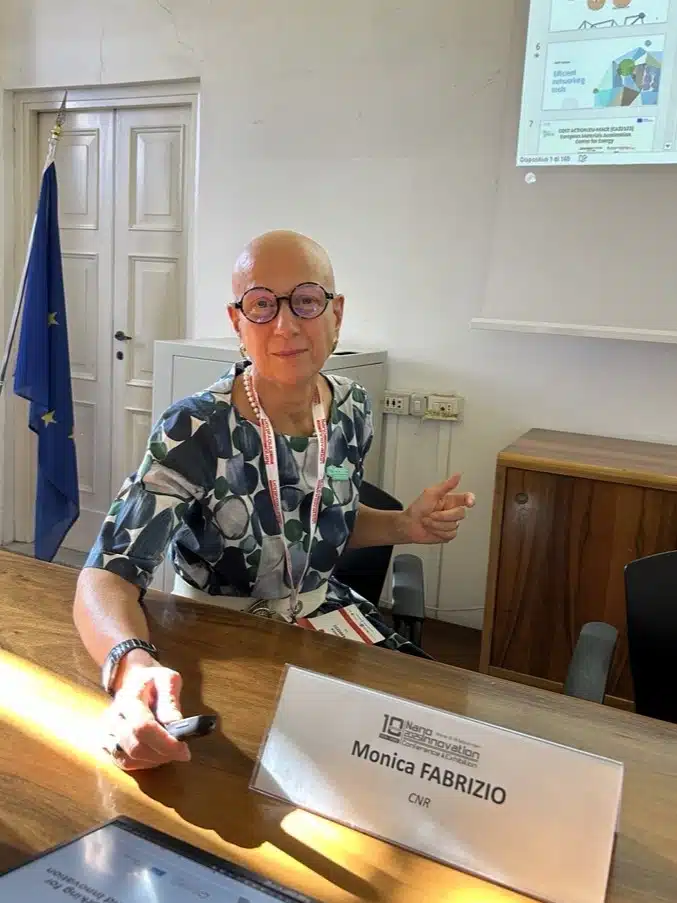
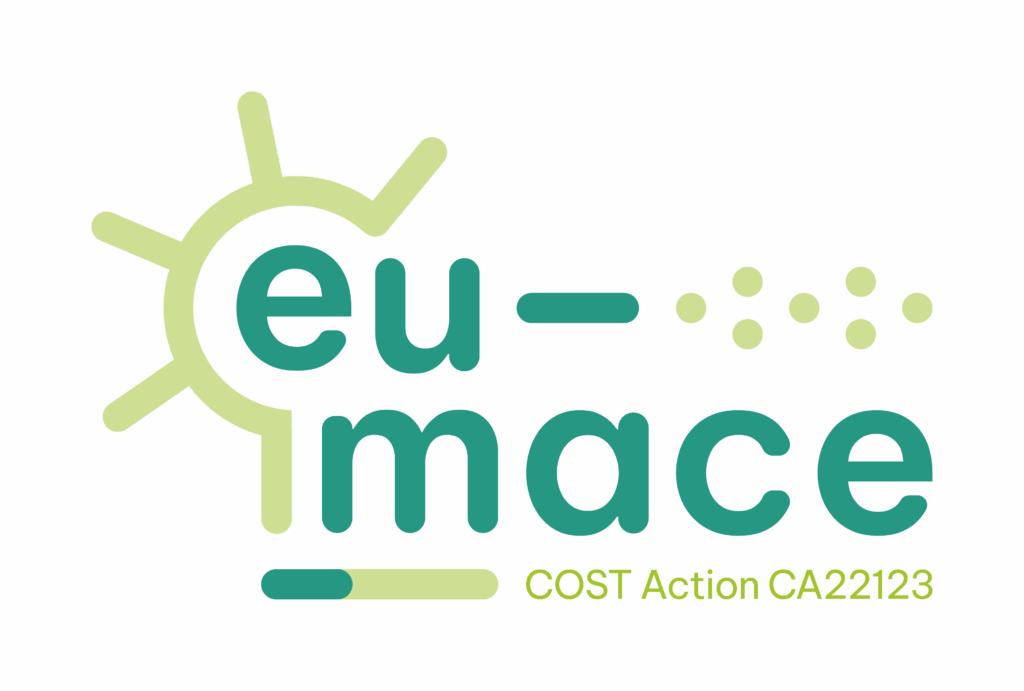
Dr Monica Fabrizio, from Consiglio Nazionale delle Ricerche, Italy, and EU-MACE Vice Chair:
“Engaging with researchers and stakeholders at Nano Innovation 2025 is highly valuable for advancing energy materials and accelerating the clean energy transition. As vice-chair of COST Action EU-MACE, I see how these interactions help define standards, tools, and validation methods — the foundation for enabling “legacy labs.” By increasing automation, standardizing experimental data, and integrating AI, these labs become interoperable with Materials Acceleration Platforms, creating a seamless loop from experiments to device-ready solutions.
At the same time, the Technology Development Matrix provides a top-down perspective, identifying the most promising material classes where new MAPs should focus. The legacy lab methodology then applies bottom-up approaches to these materials, accelerating discovery and validation. Together, TDM and legacy labs represent complementary tools within EU-MACE, and our members are learning how to use both to build stronger collaborative networks in nanotechnology and drive Europe’s clean energy innovation ecosystem.”
Dr Noelle Gogneau, Centre National de la Recherche Scientifique, France, and OPERA Action Chair
Current technical innovations in nanotechnology are mainly based on improving and controlling the material properties. Epitaxy is one of the most powerful techniques to fabricate optimised materials. For engineering the best nanomaterials and ensuring their optimal integration in advanced devices, disruptive approaches and technical challenges cannot be considered without exchanges with the epitaxy and nanotechnology communities, as well as the stakeholders. These exchanges promote the convergence of knowledge and offer to the young research generation, as previously their elders, the essential network for becoming the innovators of tomorrow.
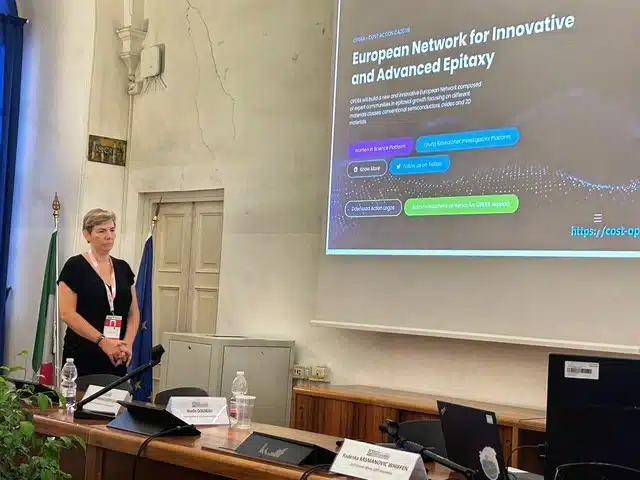

Bridging the gap for young researchers
More than ever, young researchers, doctoral candidates, and students need strong support to help them integrate into the professional world and empower them to take a leading role in shaping the future of our society.
As part of the Young Innovation sessions, two COST Actions contributed by sharing their experience and demonstrating how these networks create opportunities for early-career researchers through training, networking, and international collaboration.

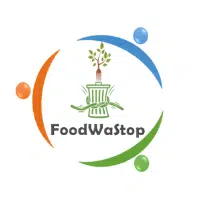
Jessica Girardi, Nodibinajums Baltic Studies Centre, Latvia, and Working Group leader and Young Researcher from the COST Action FoodWaStop:
“As a young researcher, participating in the Nano Innovation Conference offers a valuable opportunity to connect with experts and gain exposure to the latest advancements in AgriNano technologies. Finding inspiration for new research ideas and building future collaborations are invaluable benefits that only direct involvement in events like the Nano Innovation Conference can truly offer. The COST Action FoodWaStop aims to reduce food loss and waste through innovative scientific approaches and wide international collaboration of different committed researchers and stakeholders. Engaging with participants at the conference is valuable because it provides a unique platform to explore cutting-edge AgriNano technologies that can enhance novel and more efficient side-stream prevention and valorisation across the food value chain. By connecting with experts in nanotechnology, agriculture, and sustainability, we can accelerate the development and adoption of smart, resource-efficient solutions that align with our goals of reducing/valorising wastage and promoting more resilient and sustainable agricultural systems.“
Dr Elisa Artegiani, Università degli Studi di Verona, Italy, and Young researcher and Sub-Working Group leader of the COST Action RENEW-PV:
“Attending the NanoInnovation conference offers the opportunity to delve deeper into a wide range of cutting-edge topics in nanotechnology. Especially for young researchers, it is the ideal place to gain new knowledge, develop original research ideas, and find collaborations.
Furthermore, in my case, the RENEW-PV COST project encompasses many of the topics covered at the conference; thus, this conference is the ideal place to offer the support of our consortium for research or to find new collaborators for our project. Broadening research horizons and finding new perspectives are always important to achieve results in research projects.”
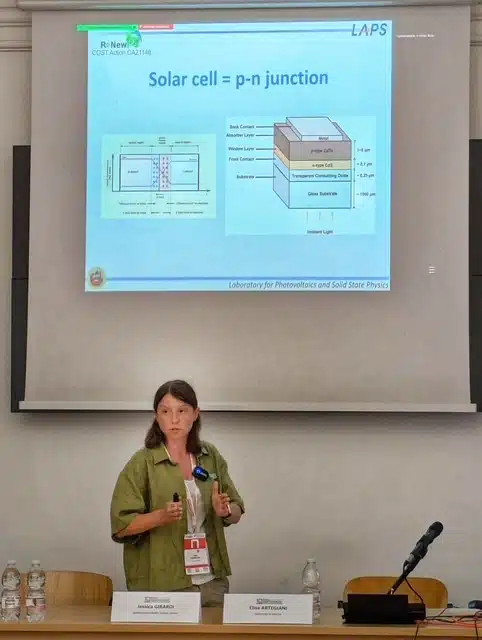

Innovators at NanoInnovation
The COST Innovators Grant ECO-AERoGELS built upon the achievements of the AERoGELS COST Action by focusing on the role of aerogels in addressing Europe’s environmental and resource-related challenges within the context of the circular economy and green technologies. The COST Innovators Grant accelerates breakthrough innovations, turning COST Action research into market-ready solutions with real societal impact.
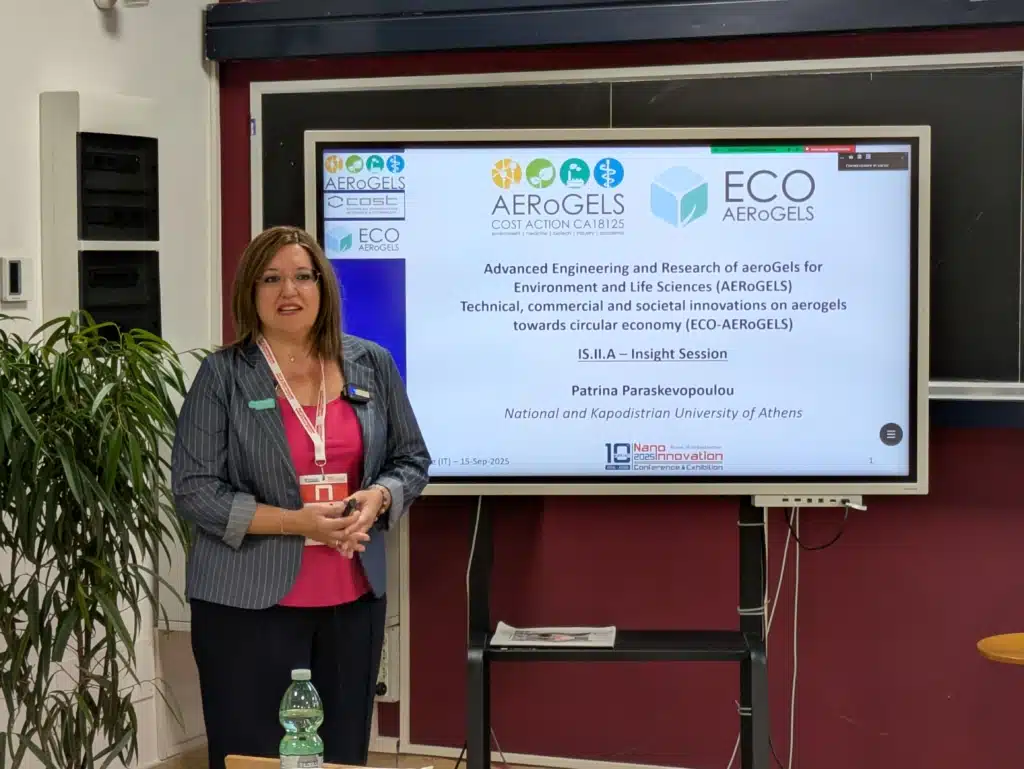

Prof Patrina Paraskevopoulou from the National and Kapodistrian University of Athens introduced her network and highlighted the relevance of attending this conference:
“NanoInnovation 2025 provided the ideal stage to present our COST Action AERoGELS and the COST Innovators’ Grant ECO-AERoGELS. These initiatives have successfully advanced sustainable aerogel research and built a strong network across Europe and beyond. Sharing the outcomes of these projects with the nanotechnology community was an excellent way to highlight our achievements, exchange knowledge, and identify new perspectives to inspire future directions in aerogel science and applications. Beyond their scientific impact, our success stories also serve as a source of inspiration for young researchers, demonstrating the opportunities that COST networking provides for collaboration and the realisation of ambitious research goals.”
On 17 September, COST Science Officer Dr Radenka Krsmanovic Whiffen presented the COST Programme. This was an opportunity to introduce the network instrument and its associated opportunities. How can they engage in COST and COST Actions by joining existing networks, submitting their proposals through the COST Open Call, or becoming a COST External Expert.
Today, nanotechnology stands as one of the most significant and powerful drivers of rapid and sustainable development, with a profound impact across numerous fields. The conference, which brought together leading scientists, researchers, and professionals in the field, gave a great opportunity to the COST Action participants to network, share knowledge, expertise, and insights.
